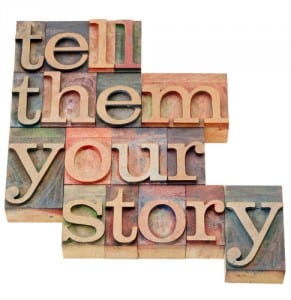 It was clear that the most recent #SMWLDN events we attended were all about storytelling.
It was clear that the most recent #SMWLDN events we attended were all about storytelling.
No, not fairytales. Storytelling, in the context of advertising and marketing, simply means relaying the significance of a brand beyond its products. It means finding the human relevance of a brand, and broadcasting that to the world. With that in mind, here are our key takeaways from the day…
1. Make communities work for you
Sarah Drinkwater, head of Google Campus delivered a great talk about how social media engagement levels are driven by, you guessed it, storytelling. However, social media platforms are not communities, they merely play host to them. Communities ultimately broadcast stories, whether they use social media to do it or not. As Sarah reminded us: “Communities can do what individuals can’t. They’ve pre-dated social media by thousands of years.”
Don’t forget to put your intended community at the heart of everything you do, above and beyond the platforms you want to use to reach them.
2. Your brand is the main character… even when it’s not
Another thing Sarah Drinkwater discussed was the need for every story to have a lead character. Without a clear focal point, any message you try and relate will be unfocused. Sarah relayed her key belief that, “You can’t write your story unless you’ve got a main character, and that’s got to be you.”
The easiest way to achieve this is to make yourself a central character in your story. However, we would argue that the key word (or rather, article) here is “a central character,” not “the central character.” The more you can talk about how your brand’s consumers have actually used the products and services in the real world, and decrease the focus on promoting your product’s intended use, the more effective your story will be.
3. Want it shared? Make it emotional
A repeated social media buzzword is “shareability.” That said, the big buzzwords at Social Media Week in relation to shareability were “emotional” and “sentimental.” If you want audiences to broadcast your story for you, it must evoke some sort of emotion within them.
Unruly, a global platform for social video advertising, has gone so far as to create the “Periodic Table of Unruly ShareRank Elements.” The table covers all the key elements you could invoke in order to encourage viewers to share videos… and guess what has more entries than anything else? That’s right, emotional responses.
4. Cats and celebrities won’t get your video shared on their own
We’re shocked too. We thought cats literally ran the internet. Not so much, according to Unruly. It comes back to invoking an emotional response; what function does a cat or celebrity play in that?
Although initially sad, we loved this video by GoPro, where we see a fireman become an actual hero for a cat.
When it comes to celebrities, however, we can look to the recent Ice Bucket Challenge social media campaign.
Tom Hiddleston got in on the act relatively early, with a similar video to other participants, which to date has gleaned 1.4 million YouTube views. His fellow British actor (King of the Internet) Benedict Cumberbatch, meanwhile, was notably late to the party. But, taking no less than five dunkings in varying demonstrations of slapstick, his video has received almost five million views. Because who doesn’t want to see one of the biggest stars in the world poke fun at himself by way of an extended wet t-shirt display?
5. For the most success, go for multiple emotions
It’s all very well to evoke one emotional response in a viewer. However, the best videos capitalize on a trifecta of happiness, sadness and warmth. How about this video, advertising for the World’s Toughest Job – a Director of Operations.
http://www.youtube.com/watch?v=4MLl60odCgY#t=92
The most exciting thing about our most recent experiences during Social Media Week London was seeing our own principles of storytelling put into practice. It’s no big surprise that the best way of promoting something is to make the story fun, emotional and, most importantly of all, about people, not products. Storytelling might be a buzzword, but it doesn’t have to be a scary one… unless you want it to be, that is.